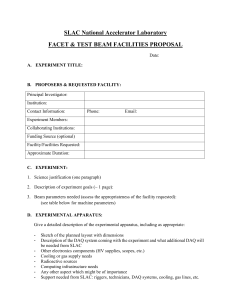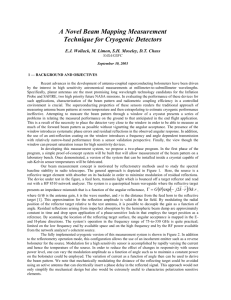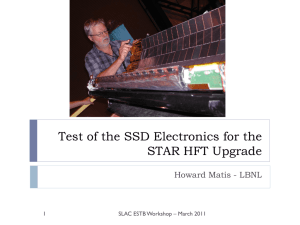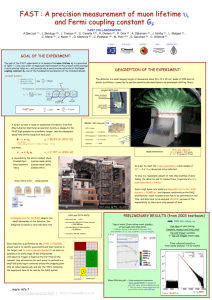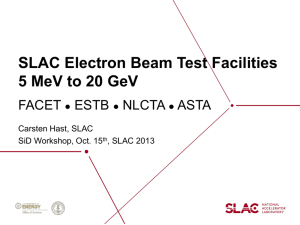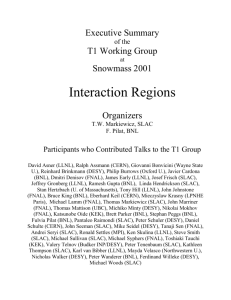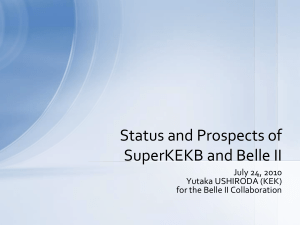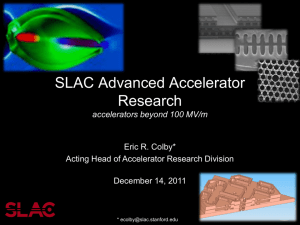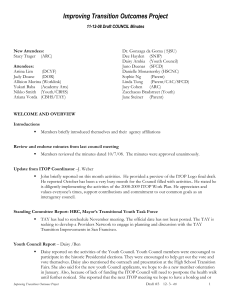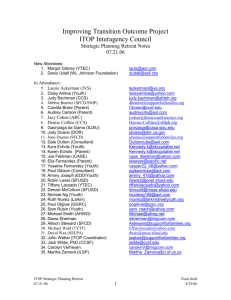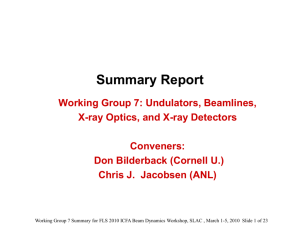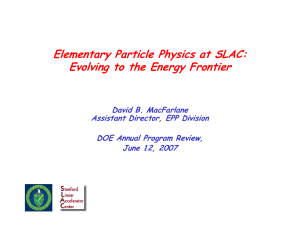FACETandTESTFACILITIES-proposal
advertisement
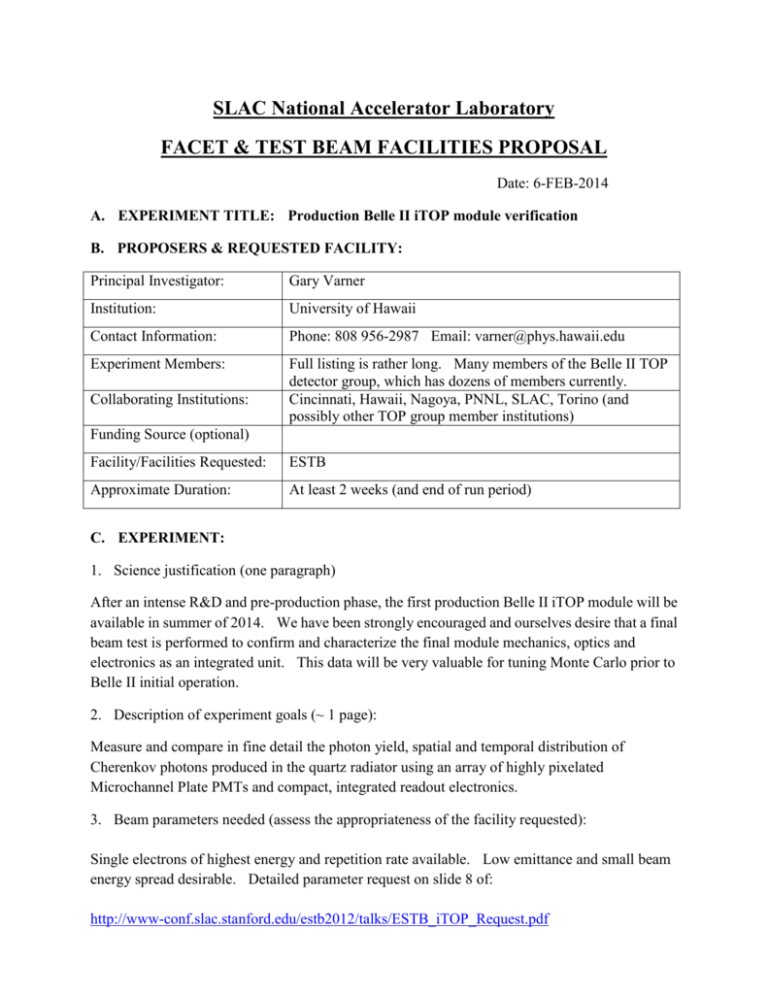
SLAC National Accelerator Laboratory FACET & TEST BEAM FACILITIES PROPOSAL Date: 6-FEB-2014 A. EXPERIMENT TITLE: Production Belle II iTOP module verification B. PROPOSERS & REQUESTED FACILITY: Principal Investigator: Gary Varner Institution: University of Hawaii Contact Information: Phone: 808 956-2987 Email: varner@phys.hawaii.edu Experiment Members: Full listing is rather long. Many members of the Belle II TOP detector group, which has dozens of members currently. Cincinnati, Hawaii, Nagoya, PNNL, SLAC, Torino (and possibly other TOP group member institutions) Collaborating Institutions: Funding Source (optional) Facility/Facilities Requested: ESTB Approximate Duration: At least 2 weeks (and end of run period) C. EXPERIMENT: 1. Science justification (one paragraph) After an intense R&D and pre-production phase, the first production Belle II iTOP module will be available in summer of 2014. We have been strongly encouraged and ourselves desire that a final beam test is performed to confirm and characterize the final module mechanics, optics and electronics as an integrated unit. This data will be very valuable for tuning Monte Carlo prior to Belle II initial operation. 2. Description of experiment goals (~ 1 page): Measure and compare in fine detail the photon yield, spatial and temporal distribution of Cherenkov photons produced in the quartz radiator using an array of highly pixelated Microchannel Plate PMTs and compact, integrated readout electronics. 3. Beam parameters needed (assess the appropriateness of the facility requested): Single electrons of highest energy and repetition rate available. Low emittance and small beam energy spread desirable. Detailed parameter request on slide 8 of: http://www-conf.slac.stanford.edu/estb2012/talks/ESTB_iTOP_Request.pdf D. EXPERIMENTAL APPARATUS: Give a detailed description of the experimental apparatus, including as appropriate: Slide numbers below refer to material prepared previously: http://www-conf.slac.stanford.edu/estb2012/talks/ESTB_iTOP_Request.pdf - Sketch of the planned layout with dimensions Slide 6 illustrates the configuration used previously. We will likely reduce some of these components and replace the veto counters with a lead-glass calorimeter. The module dimensions are listed on Slide 2 (quartz bar box is larger by a few 10’s of cm). - Description of the DAQ system coming with the experiment and what additional DAQ will be needed from SLAC Slides 5, 10-11 illustrate what we will use for DAQ and control. No explicit request for DAQ support from SLAC anticipated. Only networking and beam extract timing signal at racks at end of beam line. - Other electronics components (HV supplies, scopes, etc.) Caen HV, calibration signal generator, test equipment, power supplies, calibration picosecond laser (low power) - Cooling or gas supply needs Dry nitrogen purge (0.6L/min), and cooling water (~120W dissipation) - Radioactive sources None imagined. Initial testing will be done elsewhere in research yard using cosmic ray muons in focusing DIRC Cosmic Ray test station - Computing infrastructure needs Network connections only. - Any other aspect which might be of importance We will reuse rotary stage developed for FNAL beam test. This needs to be positioned - Support needed from SLAC: riggers, technicians, DAQ systems, cooling, gas lines, etc. Support for initial set up and operation of dry nitrogen, qualification of cooling, custom power supplies. E. EXPERIMENT LOGISTICS: Give details of the logistics for the experiment, including as appropriate: - Space Requirements (include sketch): Slide 7. In order to emulate various polar and azimuthal angle impacts on the detector, it is necessary to rotate and translate the detector by a couple meters around the roughly 4m wide by 2m deep nominal detector/footprint. - Special Requirements (cooling water, gasses, electricity, magnets, detectors, etc): Nitrogen boil-off for purging the iTOP detector module (to maintain cleanliness). Plan to bring and operate our own closed-loop chiller and power supplies – they will need electrical safety certification. We plan to provide scintillating fiber beam definition counters and quartz start-time counters. A lead-glass counter is requested, as well as a precision timing beam extract signal. - Estimated installation time: 4 shifts of 8 hours each. This reduced time will be possible due to having practiced twice before in the research yard prior to moving into ESA. - Duration of Test and Shift Utilization: A 2 week campaign is planned. A few shifts of high statistics runs at previous operating points for cross calibration and then scans in polar angle and azimuthal angle, to provide incident angle data not possible in previous beam tests. - Desired Calendar dates: Last two weeks of full running (nominally something like July 21 – Aug 3). - Any other aspect of Importance: As noted above, efficient use of the beam time allocated depends greatly on operating the detector successfully in advance in the cosmic ray test stand in the research yard. Support for that operation requested.
